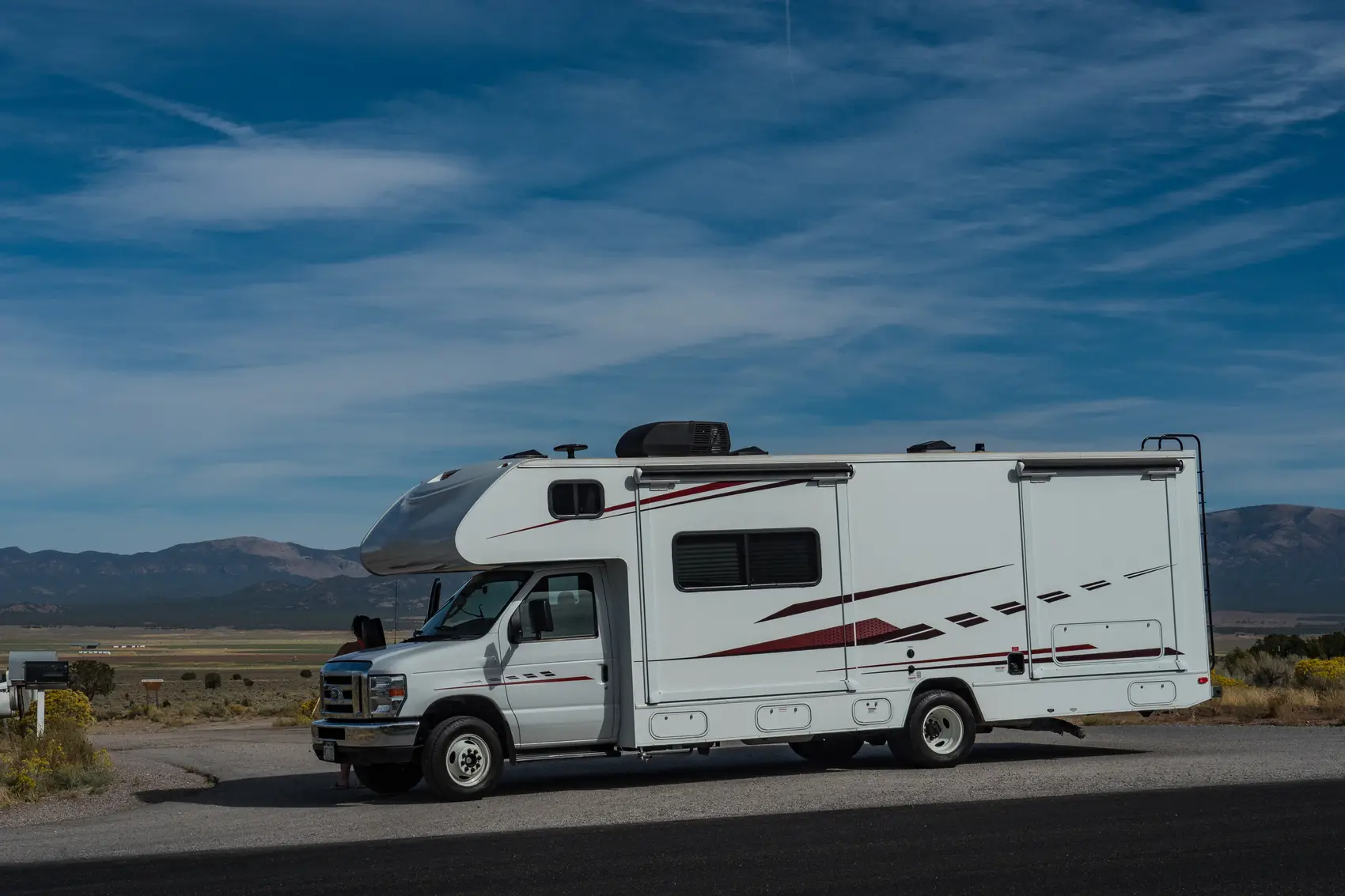You've been there. That slow, nerve-shredding reverse into a tight campsite. One person is outside, yelling directions that sound more like a panicked charades game. You're craning your neck, checking three mirrors at once, and praying you don't hear the sickening crunch of fiberglass against a hidden picnic table.
This anxiety-inducing ballet is an RV rite of passage, but it doesn't have to be your reality. A high-quality backup camera system is the single most effective upgrade for eliminating blind spots, reducing stress, and protecting your significant investment. It transforms guesswork into precision.
But the market is a minefield of confusing jargon and wildly different price points. This is not just a list of "the best" cameras. This is a comprehensive guide to help you understand the technology, decode the specifications, and select the perfect system for your specific RV and travel style.
Wired vs. Digital Wireless
Before you look at a single brand, you must answer this core question. Your answer will narrow the field by 90%.
The Case for Wired: Unflinching Reliability
A wired system connects the camera to the monitor via a physical cable. This is its greatest strength and its most significant weakness.
- Who Should Choose Wired?
- Owners of Large Rigs (45ft+): For long Class A motorhomes and fifth wheels, a wired connection is the only way to guarantee a 100% stable, lag-free signal.
- Airstream & Metal-Bodied Trailer Owners: The metal shell of these trailers (often called a "Faraday cage") can block or severely degrade wireless signals. A wired system bypasses this issue entirely.
- The "Set-It-and-Forget-It" RVer: If you want a system that is permanently installed and works flawlessly every single time you turn the key, with zero chance of interference from other electronics, wired is your answer.
- Installation is a project. It involves drilling holes and routing a cable the entire length of your rig, a task that can take several hours and may require a professional installer.
The Case for Digital Wireless: Convenience is King
Modern digital wireless systems are not the crackly, unreliable analog systems of the past. They use a paired, encrypted signal that is vastly more stable.
- Who Should Choose Wireless?
- The DIY RVer: The primary appeal is the ease of installation. You can often have a wireless system up and running in under an hour with basic tools.
- Owners of Small-to-Mid-Size Rigs (<45ft): For most travel trailers, Class C, and Class B motorhomes, a quality digital wireless signal is more than sufficient and reliable.
- Those Who Value Flexibility: It's easier to transfer a wireless system to a new RV in the future.
- While vastly improved, the signal is not infallible. In extremely crowded areas with a lot of radio frequency noise (like a packed RV park with dozens of other systems), you could experience momentary signal drops or "digital ghosting."
What Really Matters
- Resolution (720p vs. 1080p): Think of this as Standard HD vs. Full HD. While 720p is adequate, 1080p provides noticeably more detail. On a 7-inch or 9-inch monitor, this means the difference between seeing "a rock" and seeing "a sharp, tire-threatening rock." For safety, the extra clarity is worth it.
- Waterproof Rating (IP Rating): This is crucial.
- IP67: The bare minimum. Can be submerged in 1 meter of water for 30 minutes. Fine for most rain.
- IP68: Better. Can be submerged deeper and longer.
- IP69K: The Gold Standard. This rating means the camera can withstand high-pressure, high-temperature water jets. It will survive any torrential downpour and, more importantly, a direct hit from a pressure washer at a truck wash. This is the rating you want for long-term durability.
- Field of View (FOV): Wider isn't always better.
- The Sweet Spot (120°-130°): Provides an excellent wide view of your surroundings, effectively eliminating blind spots without major distortion.
- Too Wide (170°+): Creates a "fisheye" effect. While you can "see more," this distortion makes it very difficult to judge distance accurately, which can lead to accidents.
The Best RV Cameras
1. VST Tech 983W-HD
Best For: The RVer who refuses to compromise and wants the best wireless performance available.
The VST tech 983W-HD has earned its top spot by delivering a wired-like experience in a wireless package. Its strength lies in its powerful digital transmitter, which maintains a stable, clear signal on rigs up to 70 feet. The true 1080p camera renders a crisp, vibrant image on the 7-inch HD monitor, giving you the confidence to navigate the tightest spots. It also includes loop recording on an SD card, effectively turning your safety camera into a rear-facing dashcam.
- Key Specifications:
- Type: Digital Wireless
- Resolution: 1080p Full HD
- Monitor: 7-inch HD (1024x600)
- IP Rating: IP69K
- FOV: 130°
- If you want a top-tier wireless system that minimizes the technology's inherent drawbacks and delivers exceptional image quality, the 983W-HD is the clear winner. It's an investment in peace of mind.
2. Kocchis 767M672
Best For: Owners of large fifth wheels, Class A motorhomes, and Airstreams who demand absolute reliability.
When your rig is your home and its length is measured in dozens of feet, you cannot afford a signal drop. The Kocchis 767M672 is an unapologetically robust, commercial-grade system. Its centerpiece is the expansive 7-inch monitor, which can be configured to show feeds from up to four cameras (sold separately), covering your rear and blind spots. The heavily shielded cable ensures a perfect, lag-free image every time.
- Key Specifications:
- Type: Wired
- Resolution: 1080p HD
- Monitor: 7-inch
- IP Rating: IP68
- FOV: 120°
- This is not a system you buy for flashy features. You buy it for its battle-tested reliability. If the thought of a wireless signal dropping at a critical moment gives you nightmares, the 767M672 is your solution.
3. Furrion Vision S
Best For: Owners of new RVs with a pre-installed Furrion mounting bracket.
Furrion has a massive footprint in the RV industry, and many manufacturers now pre-wire their units for a Vision S camera. If your RV has this bracket, your installation process is reduced to about 15 minutes. The camera itself is a solid performer, with good night vision and a secure digital signal. It serves as both a backup camera and a rear observation camera for monitoring traffic while driving.
- Key Specifications:
- Type: Digital Wireless
- Resolution: 720p HD
- Monitor: 5-inch or 7-inch options
- IP Rating: IP67
- FOV: 120°
- The convenience factor is unmatched for pre-wired rigs. While its specs may not lead the pack, its seamless integration and trusted brand name make it the default (and best) choice for a huge number of RV owners.
4. Haloview RD10
Best For: The full-time RVer who wants a fully integrated observation and security hub.
The Haloview RD10 is more than a backup camera; it's a command center. Its massive 10-inch touchscreen monitor feels like an iPad on your dash and can display split-screen views from up to four cameras. The built-in DVR is its killer feature, allowing you to record all camera feeds, providing invaluable footage in case of an incident on the road or at the campsite.
- Key Specifications:
- Type: Digital Wireless
- Resolution: 1080p Full HD
- Monitor: 10-inch Touchscreen DVR
- IP Rating: IP69K
- FOV: 120°
- The price is steep, but no other system offers this level of integration and functionality. If you want the best tech, a large viewing screen, and a robust security recording feature, the RD10 is in a class of its own.
5. Hitch-Assist Go
Best For: Any travel trailer or fifth-wheel owner who has struggled with hitching up alone.
This ingenious device solves one specific, infuriating problem. The Hitch-Assist Go is a small, battery-powered camera housed in a unit with a powerful magnetic base. You simply stick it to your tailgate, point it at the hitch, and watch on the small, dedicated monitor as you reverse. You will line up the ball and coupler perfectly on the first try, every time.
- Key Specifications:
- Type: Wireless (Point-to-Point)
- Power: Rechargeable Battery
- Mount: Magnetic
- While it's not a driving or backup camera, its value for solo travelers is immeasurable. It eliminates the need to get in and out of your truck a dozen times and turns a two-person job into a simple, one-person task. It's a marriage-saver and a must-have for anyone who tows.
Final Thoughts
Choosing a backup camera is not about adding another gadget to your dashboard. It's about fundamentally changing the way you operate your RV. It's about replacing anxiety with awareness, stress with confidence, and dangerous blind spots with a clear, commanding view.
Analyze your rig, consider your travel style, and use this guide to choose the system that's right for you. The first time you flawlessly guide your RV into a "backup only" spot with ease, you'll know it was one of the smartest investments you've ever made.


